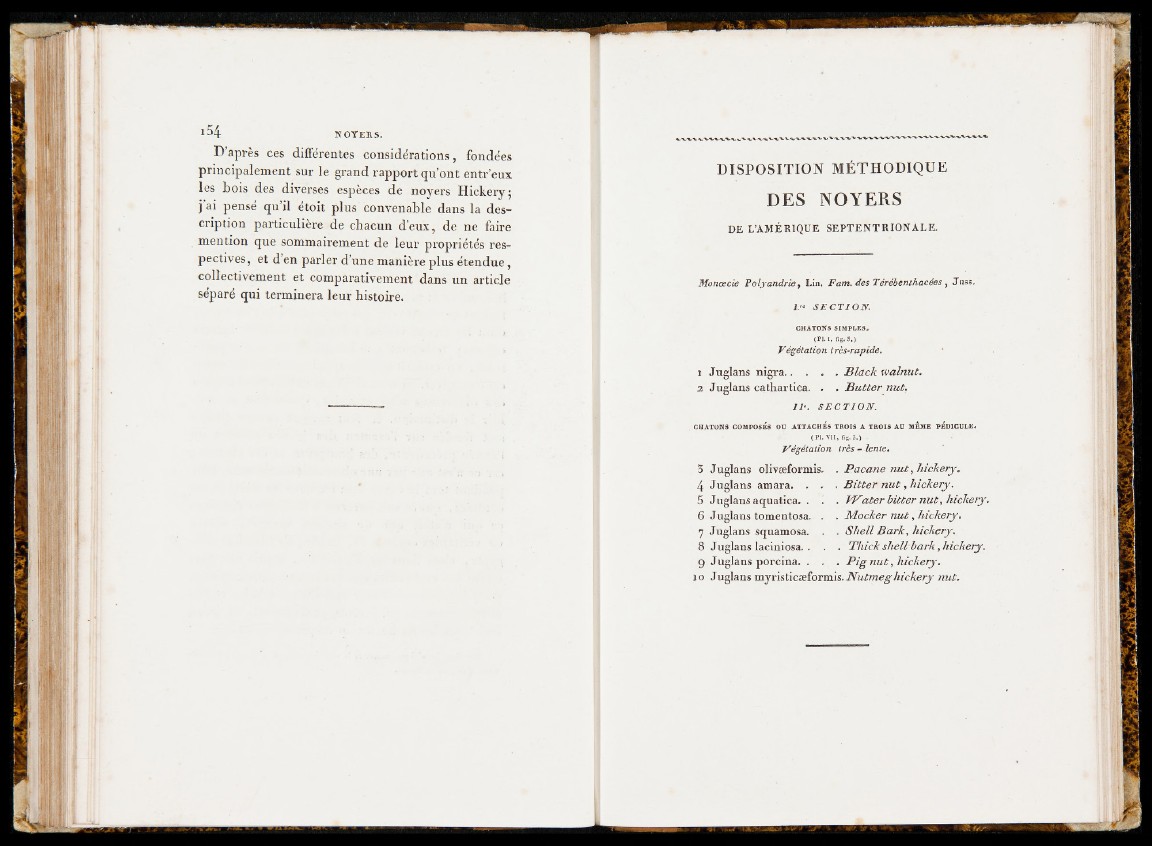
D’après ces différentes considérations, fondées
principalement sur le grand rapport qu’ont entr’eux
les bois des diverses espèces de noyers Hickery;
j ai pensé qu’il étoit plus convenable dans la description
particulière de chacun d’eux, de ne faire
mention que sommairement de leur propriétés respectives,
et d en parler d’une manière plus étendue,
collectivement et comparativement dans un article
séparé qui terminera leur histoire.
D IS PO S IT IO N M É TH O D IQ U E
DES NOYERS
DE L’AM ÉR IQ U E S E P T E N T R IO N A L E .
Moncecie Polyandrie, Lin. F am. des Térébenthacées, Jnss.
1 . " S E C T I O N .
CHATONS SIM PLES .
(Pl. I, fig. S.)
Végétation très-rapide.
x Juglans nigraBlack walnut.
z Juglans cathartica. . . Butter nut.
I I ' . S E C T I O N .
CHATONS COMPOSÉS O ü A T TA CH É S TROIS A TROIS AD MEME PÉD ICU LE .
(P l. T U , fig .S .)
Végétation très - lente.
3 Juglans olivæformis. . Pacane nut, hickery. 4 Juglans amara. . . . Bitter n u t, hickery. 5 Juglans aquatica. . . . Water bitter nut, hickery.
6 Juglans tomentosa. . . Mocker nut, hickery.
7 Juglans squamosa. . . Shell Bark, hickery.
8 Juglans laciniosa. . . . Thickshellbark,hickery.
g Juglans porcina. . . . P ig n u t, hickery.
xo Juglans myristicæformis. Nutmeg hickery nut.